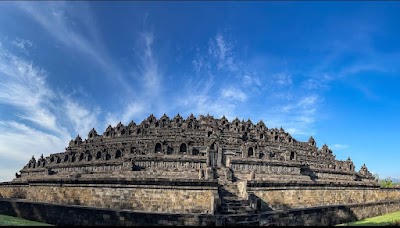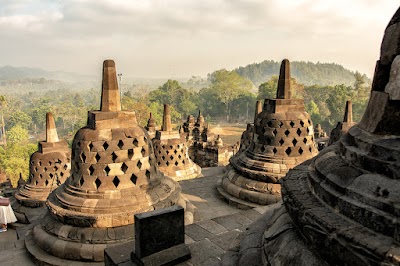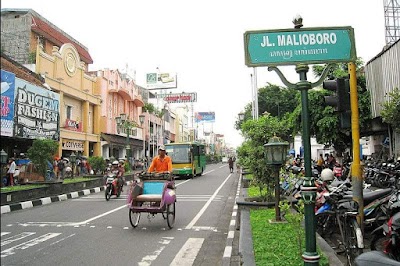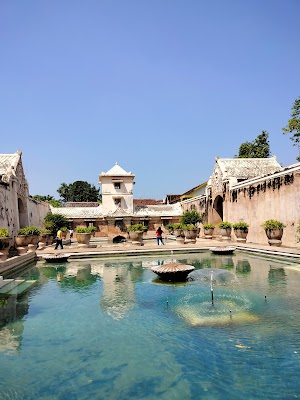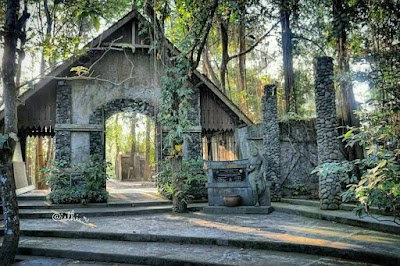Borobudur Temple (Tempat Candi Borobudur)
Overview
Introduction to Borobudur Temple
Nestled in the heart of Central Java, Indonesia, the magnificent Borobudur Temple stands as a testament to the rich cultural and spiritual heritage of the region. Constructed in the 8th and 9th centuries during the reign of the Syailendra Dynasty, this colossal structure is the largest Buddhist temple in the world and is recognized as a UNESCO World Heritage Site. Its grandeur, intricate carvings, and serene setting amidst lush green hills and rice paddies make it a must-visit destination for travelers.
The temple's architecture is a stunning representation of Buddhist cosmology, designed in the shape of a mandala, symbolizing the universe. Borobudur comprises six square platforms topped by three circular platforms, all adorned with over 2,600 relief panels and 504 Buddha statues, each narrating tales from Buddhist teachings. Visitors often marvel at the craftsmanship, where every carving tells a story, and the attention to detail is astounding.
Visiting Borobudur
The experience of visiting Borobudur Temple is an unforgettable journey. Most travelers opt to arrive at dawn to witness the breathtaking sunrise illuminating the temple, casting a golden glow over its stupas and reliefs. The early morning serenity, coupled with the mist rising from the nearby hills, creates an ethereal atmosphere that enhances the spiritual ambiance of the site.
Upon entering the temple, you will embark on a journey through the three levels of Buddhist enlightenment: the Kamadhatu (the realm of desire), the Rupadhatu (the realm of forms), and the Arupadhatu (the formless realm). As you ascend through these levels, you will find yourself surrounded by mesmerizing views and an overwhelming sense of peace. Be sure to take time to explore the various stupas and their hidden treasures, including the famous “Buddha in a stupa” statues, which provide an intimate connection to the sacredness of this site.
Practical Information
For those planning a visit, it is advisable to dress modestly, covering shoulders and knees out of respect for the sacredness of the temple. The entrance fee is reasonably priced, and it includes a guide if you wish to learn more about the temple's history and significance. Local guides are available and can provide invaluable insights into the stories behind the reliefs and the architectural features.
Accessibility is relatively easy, with the temple located about 40 kilometers from Yogyakarta, a major city in Indonesia known for its rich culture. Public transport, taxis, and even guided tours are readily available from Yogyakarta, making it convenient for travelers. Additionally, the area around Borobudur offers various accommodations and dining options, allowing visitors to fully immerse themselves in the local culture and cuisine.
Conclusion
In summary, Borobudur Temple is not just a monument; it is a symbol of Indonesia's historical and religious tapestry. As you wander through this ancient marvel, you'll find yourself captivated by its beauty, history, and spiritual significance. Whether you're a history buff, a photography enthusiast, or simply seeking a moment of tranquility, Borobudur promises an enriching experience that will linger in your heart long after you leave its sacred grounds. Don't miss the chance to explore this iconic landmark when you visit Indonesia—it truly is a journey worth taking!


